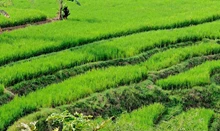
The government has started to gather price information from the market, as well as data on regional-specific consumption patterns, to keep a careful eye on the daily movement of retail and wholesale prices of several essential commodities, especially edible oils.
The data will be used to make quick policy decisions to reduce the adverse impact of high costs on consumers.
Since edible oil use differs by location, the Department of Consumer Affairs (DoCA) is giving weight to the costs of certain edible oils in specific regions to calculate daily national average pricing.
The idea is that this strategy allows the departments to properly determine the impact of prices on consumers.
The DoCA collects daily price data from 179 locations around the country for 22 key food commodities, including six edible oils: palm, peanut, mustard, vanaspati, soya, and sunflower.
Daily prices of pulses, sugar, rice, wheat, tea, salt, milk, and vegetables including tomato, onion, and potato are also collected by the department.
Previously, the DoCA used a simple averages technique to calculate the national average price of edible oils.
"We realized that the simple national average of edible oil prices does not properly reflect the actual price change," said DoCA secretary Rohit Kumar Singh.
The department is also collecting prices for branded edible oil from various centers.
For example, mustard oil is primarily consumed in the eastern and northern states, while consumption in the southern states is limited. Gujarat and Maharashtra are two states that use a lot of groundnut oil.
Other commodities such as milk, wheat, and rice are being given comparable weighting by the government.
To maintain a close eye on pricing trends for critical goods, the government has taken steps to closely monitor price movement that allows the government to take swift action to reduce price increases.









